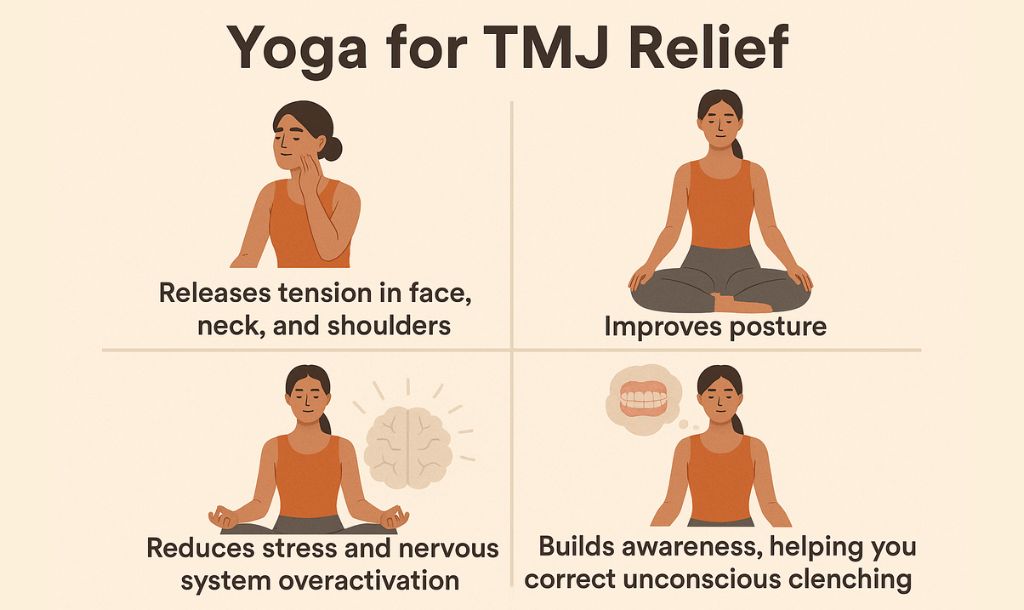What is Anantasana (Sleeping Vishnu Pose)?
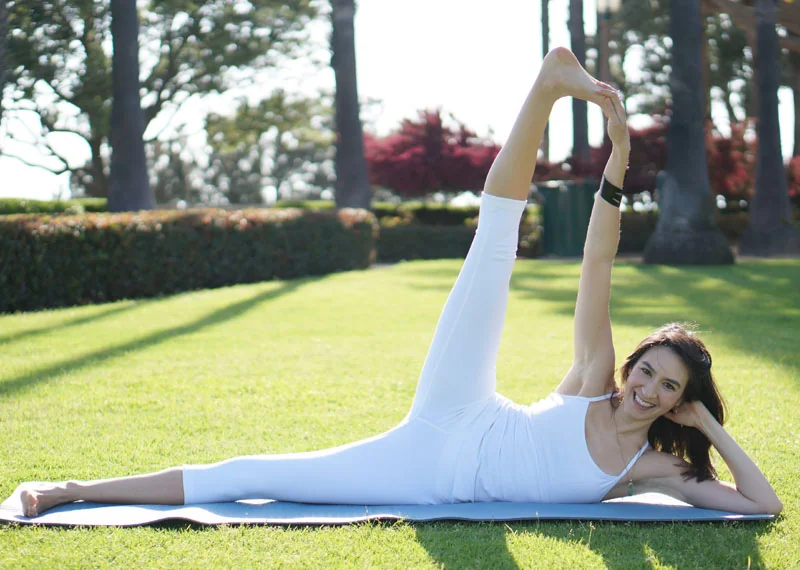
Anantasana, Sleeping Vishnu Pose, Vishnu’s Couch, or Side-Reclining Leg Lift, are various names for the same posture. This pose is performed by lying on your side with one forearm supporting your head—while your other arm and leg flex upright towards the ceiling, with your fingers holding your big toe.
Anantasana is an intermediate-level side balancing yoga pose that helps open the pelvic area and activate balance the body’s chakras. This posture is considered the basis for different advanced Anantasana variations.
The Sleeping Vishnu Pose, requires a deep sense of realization, intuitiveness, and mindfulness to reap the spiritual healing benefits of this pose.
Overview & Etymology
Anantasana comes from a few Sanskrit words, 'Ananta' meaning infinite, or endless serpent (Sheshanaag) with countless heads on which Lord Vishu relaxes by reclining sideways; and 'Asana' meaning posture.
In the yogic scriptures, Ananta plays a significant role because the great sage Patanjali (the founder of yoga sutras) is said to be the incarnation of Ananta(Sheshanaag).
This pose has been described in ancient and modern yoga texts like 19th-century's Sritattvanidhi and 1966's book Light on Yoga by B.K.S Iyengar.
Sanskrit Name: अनन्तासन Pronunciation: ahn-ahn-TAHS-ana
Pose Type: Sideways Reclining Balance
Also known as: Sleeping Vishnu Pose or Vishnu's Couch Pose
Strengthens: Obliques, Hamstrings, Shoulders, and Core
Stretches: Obliques, Hamstrings, Inner Thighs, and Calves
Health Benefits of Anantasana
Soothes lower back pain.
Helps tone the side waist area.
Strengthens your hip flexors and glutes.
Helps ease stress and calms the brain.
Enhances concentration and cognitive function.
Improves flexibility in your inner thighs and hamstrings.
Enhances blood circulation in the kidneys, liver, and uterus.
Eases menstruation or menopause-related aliments.
Increases the flow of Parana due to stimulation of the Muladhara Chakra (Root Chakra).
When to Avoid Performing Anantasana
Avoid during pregnancy.
Avoid this pose if you have a migraine.
Avoid if you have a slipped disc.
Avoid if you’ve recently had neck, spine, knee, or pelvic surgery.
Avoid if you have a severe injury around your core, neck, shoulders, etc.
How to do Anantasana (Sleeping Vishnu Pose)
To perform the sleeping Vishu pose, follow this four-phase practice which includes preparation, the asana, some posture cues, and a post-posture relaxation flow.
So, let’s dig in and discuss each segment in detail:
Part 1: Preparation for Anantasana
The Vishnu pose requires deep activation of the shoulders, tailbone, hip flexors, and core muscles. Below are some warm-up yoga poses to prepare:
1. Phalakasana (Plank Pose) - This is a classic pose to activate your core muscles. It will increase blood flow around your abdomen, obliques, lower back, and thighs, which will help prevent injury during your Vishnu pose practice.
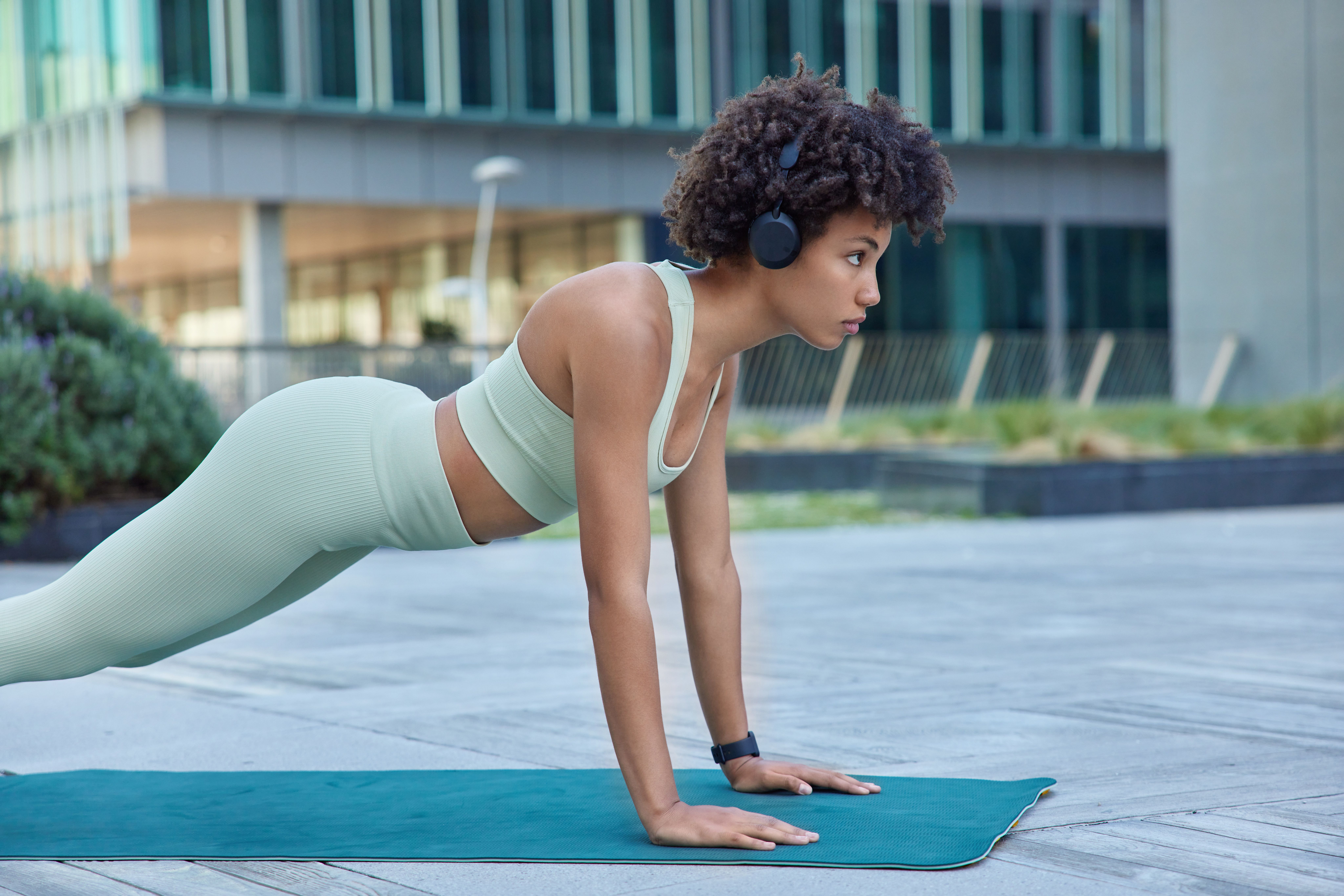
Start in a tabletop posture, inhale, and straighten your legs behind you. Engage your shoulders and core for a firm hold and to activate blood circulation. Ensure that your neck, tailbone, and legs are aligned in one straight line. Hold this pose for one minute or until you feel your core burning.
2. Trikonasana (Triangle Pose) - Start by standing in the mountain pose with wide legs. Place your right foot parallel with the back of the mat and keep your left foot pointing forward. Extend your arms to form a T, maintaining a slight bend in your knee joints. Inhale and align your gaze with your foot pointing forward.
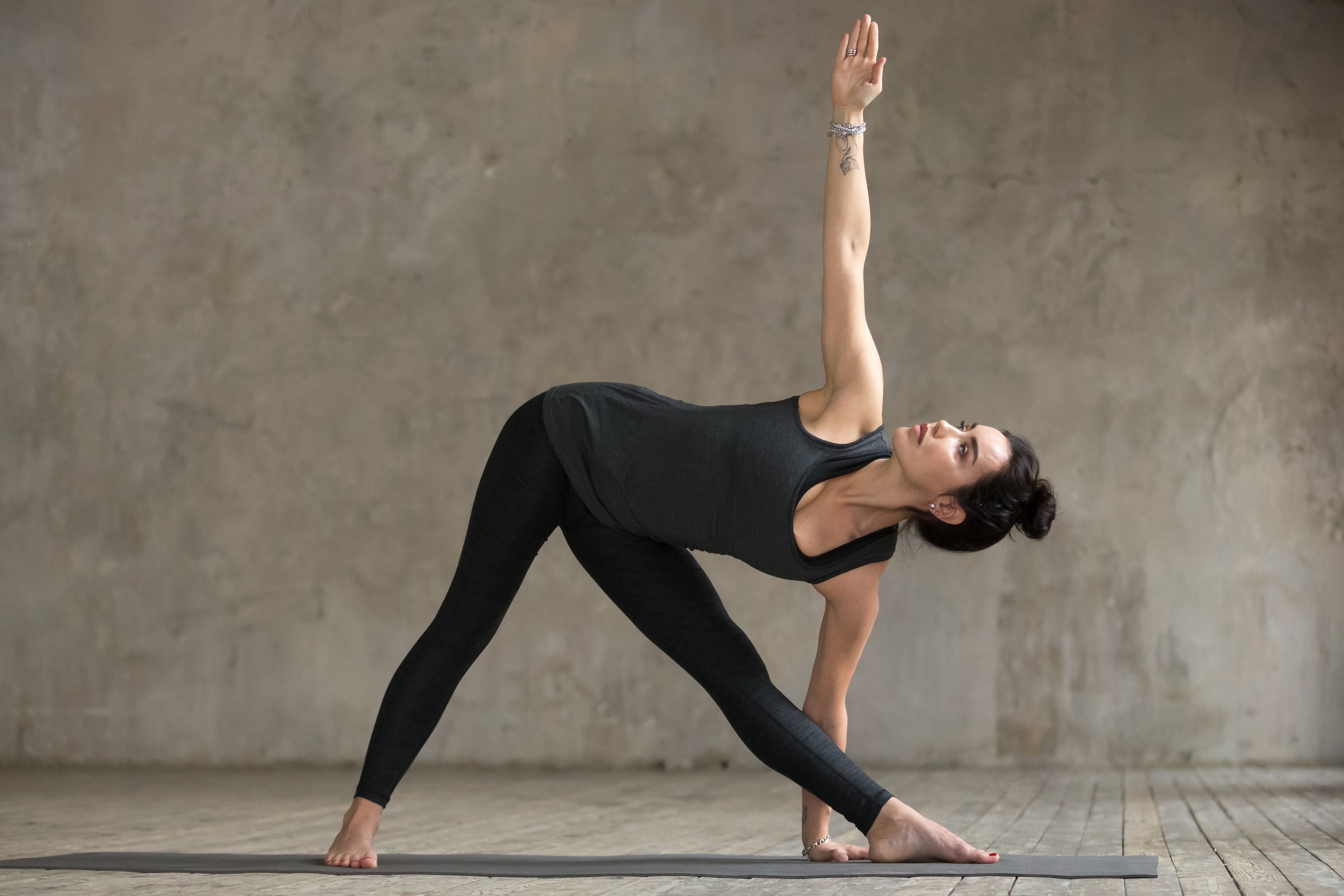
Exhale while extending your torso to the right with momentum in your hip joint. Bend forward and sideways by placing your left palm on your left shin or the mat. Hold this pose for a minute on each side, with an awareness of a deep stretch in your side obliques and hamstrings.
3. Supta Padangusthasana (Reclining Hand-to-Big-Toe Pose) -
This pose will help ease any tightness in your lower back, hip flexors, or glutes. Simply lie down on your back and inhale deeply. Now, exhale and bring your right leg close to your chest.
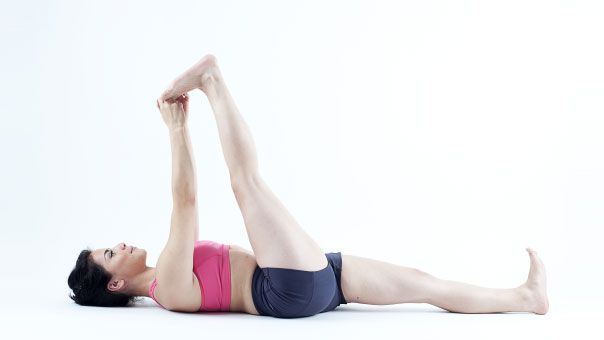
Engage your core, tucking your tailbone into the ground. Hold the big toe of your right leg and extend your leg towards the ceiling. Keep your left leg flexed on the ground and hold this pose for one minute on each side.
Part 2: Step-by-Step Instructions to Perform Anantasana
The following are steps to practice the Sleeping Vishnu Pose:
Step 1- Start by lying on the yoga mat in a Corpse Pose. Now, roll over onto your right side.
Step 2- Bend your right arm and rest your head on your right palm. Keep your legs flexed and straightened sideways, one on top of the other.
Step 3- Inhale, bend your left leg and bring it to your waist. Hold your big toe with your left hand. Now, exhale and extend your left arm and leg towards the ceiling or sky.
Step 4- Maintain your balance on one side by keeping your core muscles engaged. You can also close your eyes and concentrate on your breathing for prolonged balance.
Step 5- Finally, release your toe, get back into Corpse Pose, and repeat the same on the other side.
Breath Awareness:
Inhale - While bringing your leg close to your waist.
Exhale - While extending your leg and arm upright.
Performance Duration for Beginners: Hold the Sleeping Vishnu Pose for 1-2 minutes on each side.
Performance Duration for Advanced: Hold the Sleeping Vishnu Pose for 2 to 5 minutes on each side.
Part 3: Things to Keep in Mind
Here are some posture-related cues for beginners to follow while performing the Sleeping Vishnu Pose.
Do not over-flex your legs: Over-flexing can cause tears in your hamstrings, abductors, or glute muscles. So, as you get into Anantasana for the first time, make sure you’re observant of your body and mindful of your limits while developing strength in your legs while performing this pose.
Keep your core tight: If you cannot stabilize your body in the Vishnu Pose, you may have a weak core, or failing to engage your core muscles properly. To engage your core, tighten up your navel, thighs, side obliques, and glutes. Loose muscles will make the balance of this pose more challenging.
Part 4: Relaxing Poses After Anantasana
Relax your glutes, low back, abductors, hip flexors, and shoulders after a long session of the Sleeping Vishnu Pose with the below follow-up yoga asanas:
1. Sleeping Vishnu Pose Legs Resting Variation - When you are done flexing one leg up in Anantasana, place your leg back on the top of your resting leg.

This will allow your body to cool down completely. Also, this way, you can prevent any immediate tension or spasms in your lower back.
2. Savasana (Corpse Pose) - After completing the vishnu pose practice on both sides, it’s best to cool down your back, shoulder, and legs.

Gently lie down with your back flat on the mat in the Corpse Pose and close your eyes as you focus on your breath for 5 to 10 minutes.
Anantasana Variations to Consider
Feeling too tight or too flexible? Below are some posture variations you can try
1. Half Sleeping Vishnu Pose: In this pose, you will only rest half of your lower body sideways, and your upper body will be rested diagonally on your elbow.
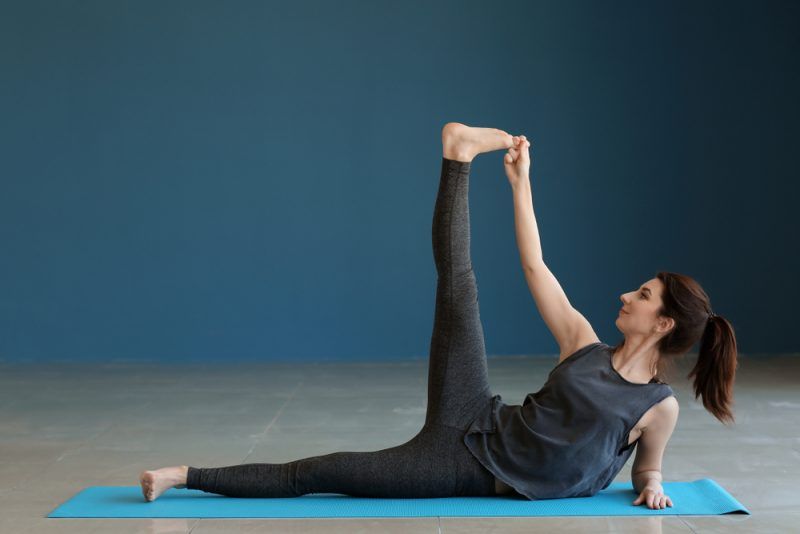
This way, the stretch in your legs will be minimized, and you can adjust the intensity of your stretch according to how your body feels.
2. Easy Side-Lying Leg Lift Pose: Try this variation if lifting your arm and leg upright feels challenging in your core and shoulders.
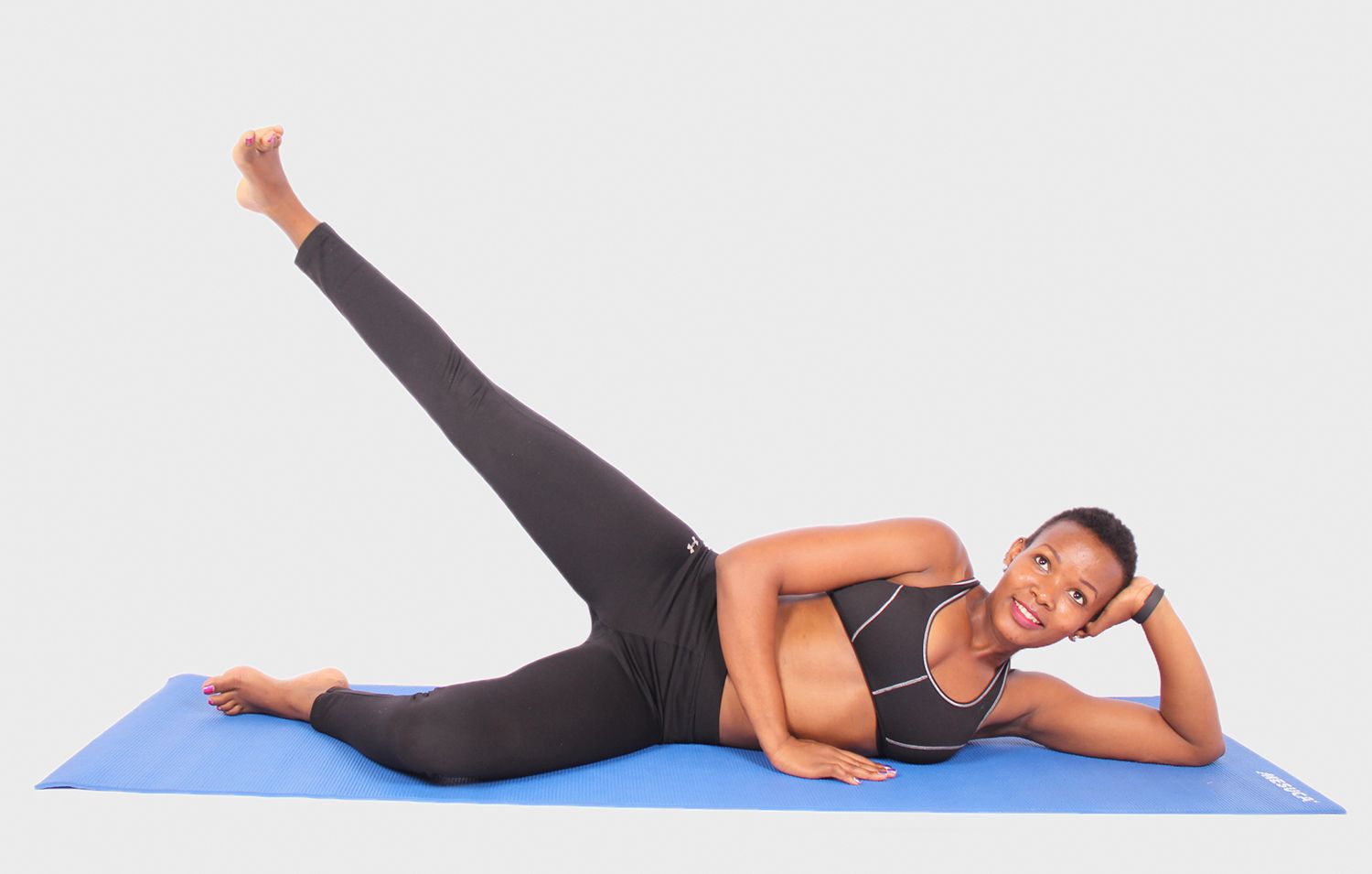
Simply place your arm on the ground and use its force to lift your leg only halfway. You can practice hovering your leg at this level and work your way toward the full stretch with time.
3. Anantasana Deep Stretch Variation: Now, lower your head on the ground from the usual sleeping Vishnu Pose. Hold your lifted leg from your shin and very gently try to pull it closer to your head.
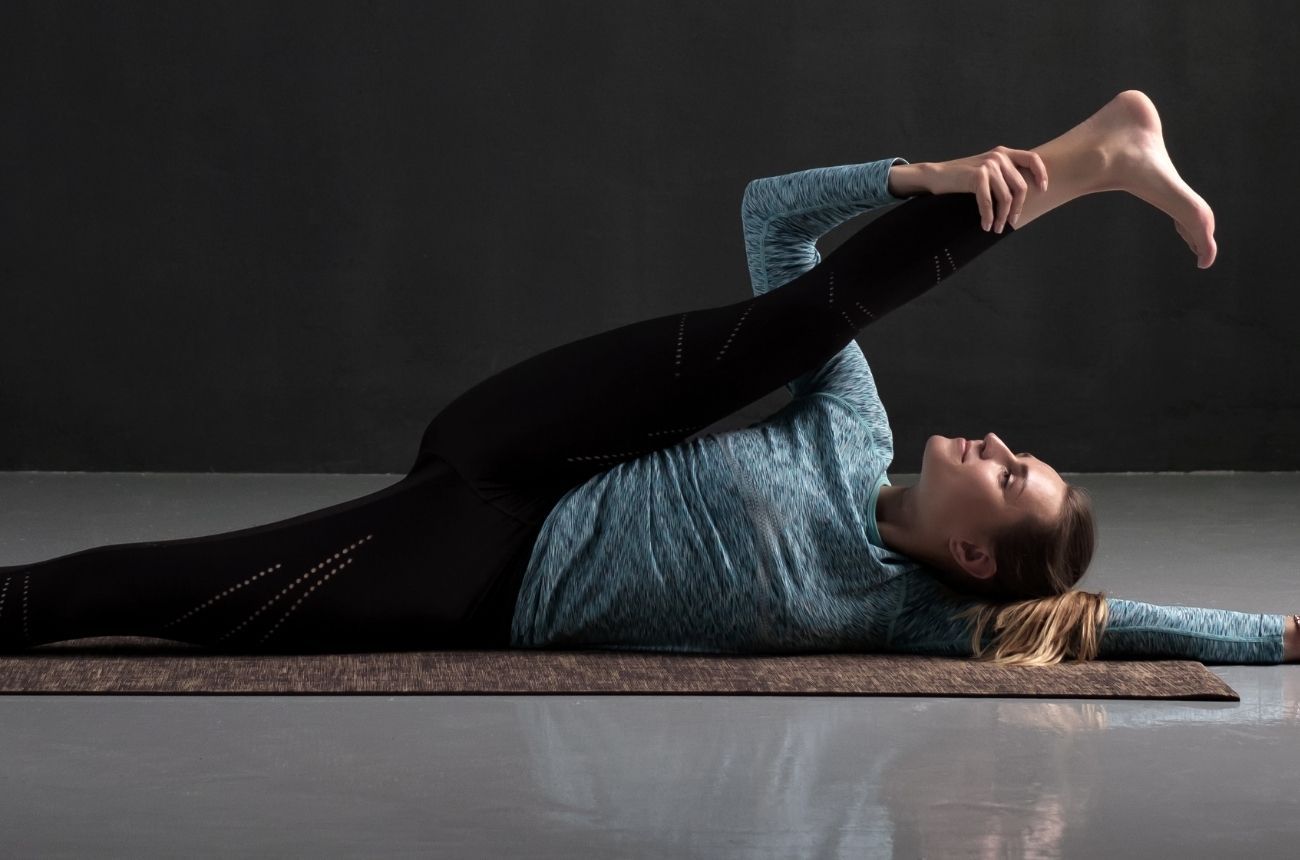
This is a variation for yogis who have excellent hip mobility. So, only stretch as much as you feel comfortable. The idea is to avoid tearing your pelvic muscles. If the pose starts to feel uncomfortable, ease up on your flex.
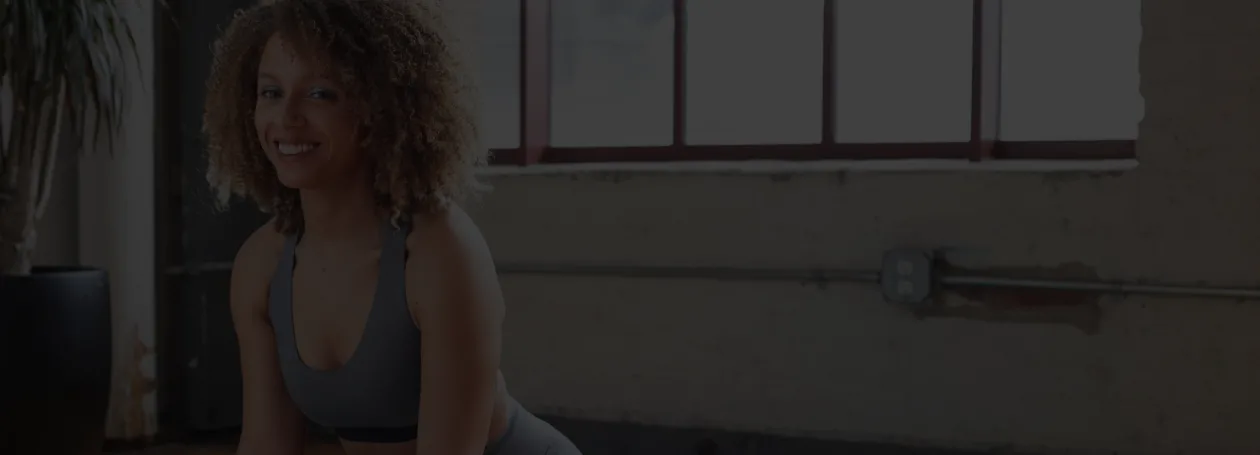
Enjoy a Free 1-on-1 Session with a Coach!
Receive personalized guidance tailored to your unique fitness goals, live with a dedicated coach—no credit card required.
Frequently Asked Questions about Anantasana
Yes, beginners can perform the Anantasana pose because it is a reclining ground pose. Because it's a sideways reclining yoga pose, it’s important to be mindful of your balance to maintain this pose for a longer duration.
The following are some health benefits of Anantasana:
- Improves side-body balance.
- Enhances cognitive function.
- It lengthens and strengthens your leg muscles.
- It gently stretches your arms, shoulders, and wrists.
Anantasana is a modern yoga pose mentioned in the 1966's book Light on Yoga by B.K.S Iyengar.
Iyengar named this pose after discovering a sculpture of Lord Padmanabha (or Lord Vishnu) in a Trivandrum temple in South India.
You should not perform Anantasana if you’ve recently had any neck, spine, pelvic, oblique, or shoulder discomfort. Also, avoid this side reclining pose if you are suffering from a migraine or slipped disc.
Practitioners can incorporate different types of variations for Anantasana into their daily routine based on how much their bodies can handle.
Some different variations of Anantasana are the Half-Sleeping Vishnu pose, Anantasana with only Leg-Lifted Up, and Anantasana with Deep Leg stretch.



.webp)
%20(7).jpg)
